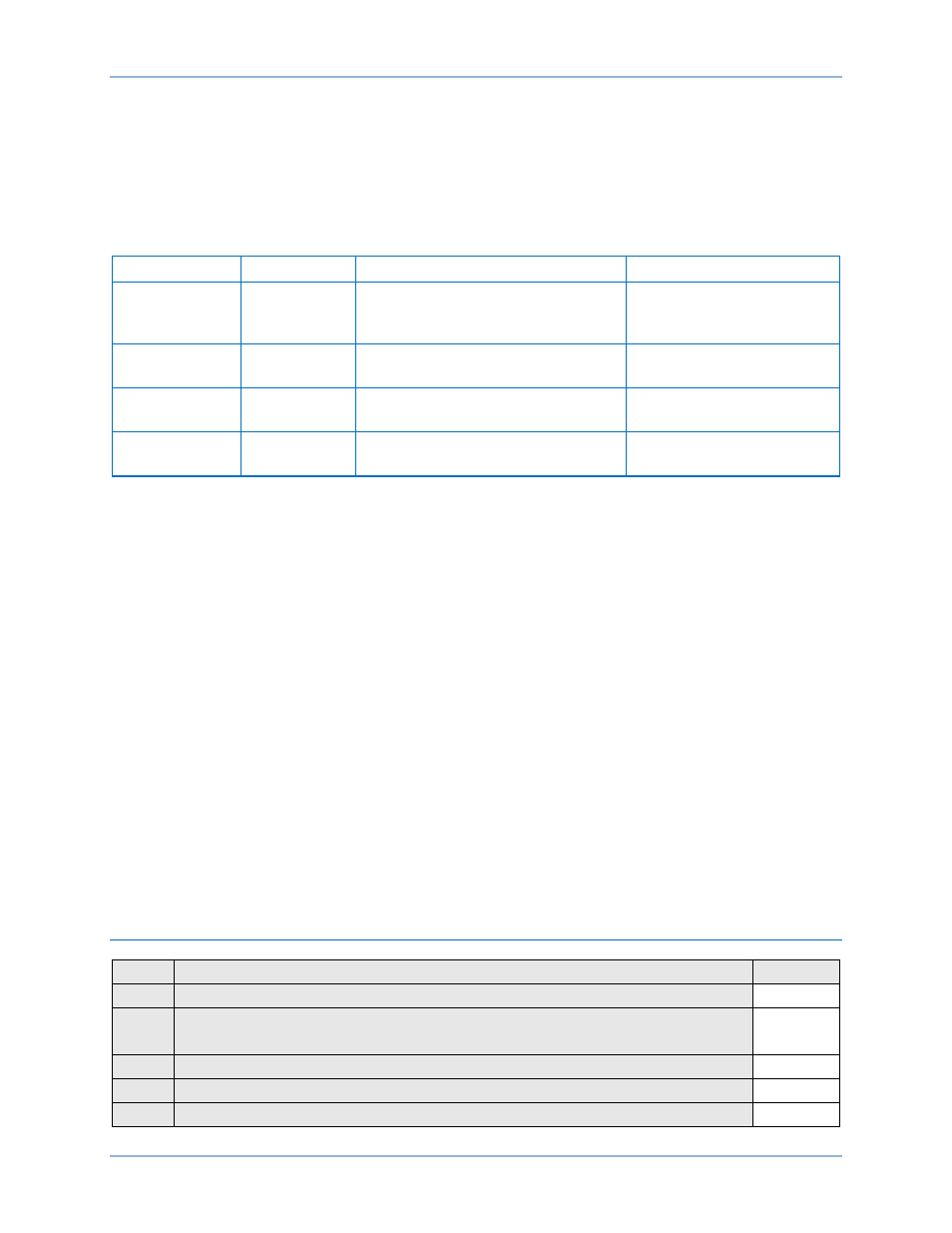Zero-sequence current polarization, Functional test report – Basler Electric BE1-11t User Manual
Page 413

9424200995 Rev H
401
Step 31: (Optional.) Repeat steps 4 through 30 for 50-4, 50-5, and 50-6. Setup commands and
associated operational setting Tables must be modified accordingly.
Step 32: (Optional.) Repeat steps 4 through 31 for settings group 1, 2, and 3.
Zero-Sequence Current Polarization
Use setup commands in Table 186. Using Table 192 as a guide, send the settings to the BE1-11t.
Table 192. Directional, Current-Polarizing, Neutral Operational Settings
Setting
Value
BESTCOMSPlus Screen
Description
Polarization
Method
IG=checked
Q=unchecked
V=unchecked
Protection, Current, Polarization
(67N)
Selects zero sequence
current polarization
Pickup
0 A
Protection, Current, Instantaneous
Overcurrent (50-1)
Sets 50-1 pickup to 0 amps
Pickup
2.0 A
Protection, Current, Instantaneous
Overcurrent (50-2)
Sets 50-2 pickup to 2.0
amps
Pickup
0 A
Protection, Current, Instantaneous
Overcurrent (50-3)
Sets 50-3 pickup to 0 amps
Step 1: Apply 2 Aac current at 0 degrees to the independent ground input IG, terminals D7 (polarity)
and D8 (non-polarity). No ac voltage is required for this test.
Step 2: From a second current source, apply 0 amp A-phase current at an angle of 0 degrees and
slowly increase the current until OUT2 closes. Decrease A-phase current until OUT2 just drops
out. Pickup will occur within
±2% of the 50-2 pickup setting (1.96 A to 2.04 A). Dropout will occur
at approximately 95% of the actual pickup value. Verify that there is a 50-2-67-Residual target
on the front-panel display.
Step 3: With the same polarizing current applied, increase the A-phase current until OUT2 closes.
Swing the angle of the applied current +90 degrees and –90 degrees away from the 0. Verify
that OUT2 opens at approximately 90 degrees lagging and 270 degrees lagging. OUT2 should
remain closed from 90 through 0 to 270 degrees lagging (defined as forward trip direction).
Step 4: Repeat steps 1 through 4 for "Reverse Polarization by selecting Reverse direction on the
Protection, Current, Instantaneous Overcurrent (50-2) screen. BE1-11t operation will occur at
180 degrees lagging. Swing the angle of the applied current +90 degrees and –90 degrees
away from the 180 degrees. Verify that OUT2 opens at approximately 90 degrees lagging and
270 degrees lagging. OUT2 should remain closed from 90 through 180 to 270 degrees lagging
(defined as reverse trip direction).
Step 5: (Optional.) Repeat steps 1 through 5 for 50-4, 50-5, and 50-6. Setup commands in Table 186
and operational settings in Table 192 must be modified accordingly.
Step 6: (Optional.) Repeat steps 1 through 5 for settings group 1, 2, and 3.
Functional Test Report
Steps
Function
Pass/Fail
4-6
Positive-Sequence Voltage Polarizing, Phase Overcurrent Elements
P / F
7-10
Negative-Sequence Voltage Polarizing, Phase Overcurrent Elements
P / F
11-18
Negative-Sequence Voltage Polarizing, Negative-Sequence Overcurrent Elements
P / F
19-22
Negative-Sequence Voltage Polarizing, Ground Overcurrent Elements
P / F
23-32
Zero-Sequence Voltage Polarizing, Ground Overcurrent Elements
P / F
1-6
Zero-Sequence Current Polarization
P / F
BE1-11t
Directional Overcurrent (67) Test
